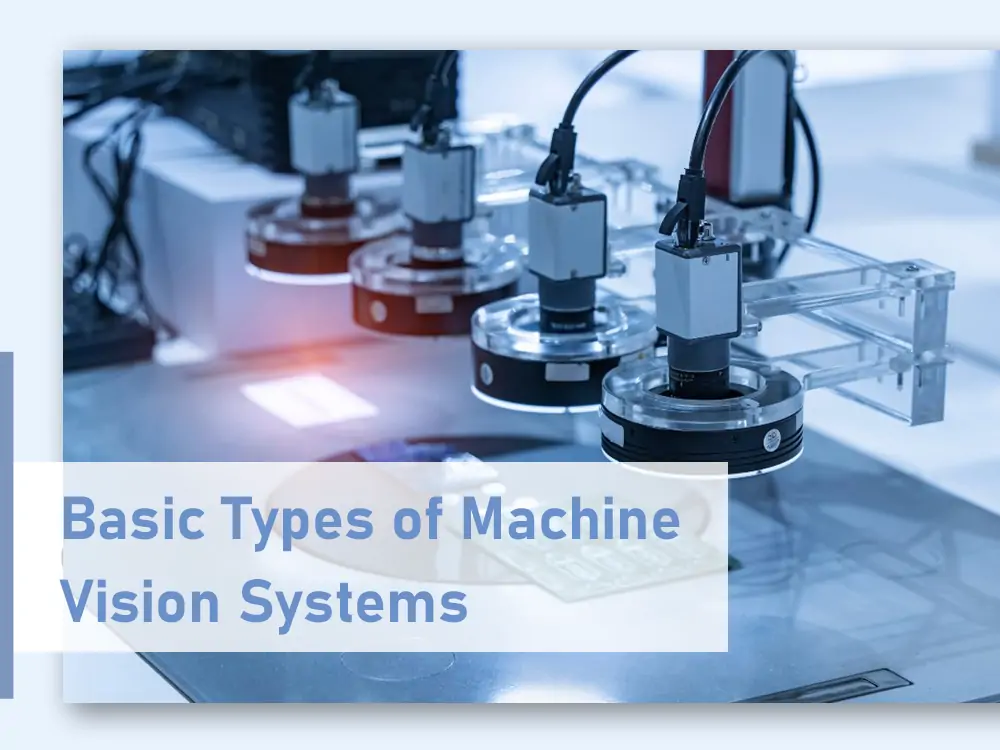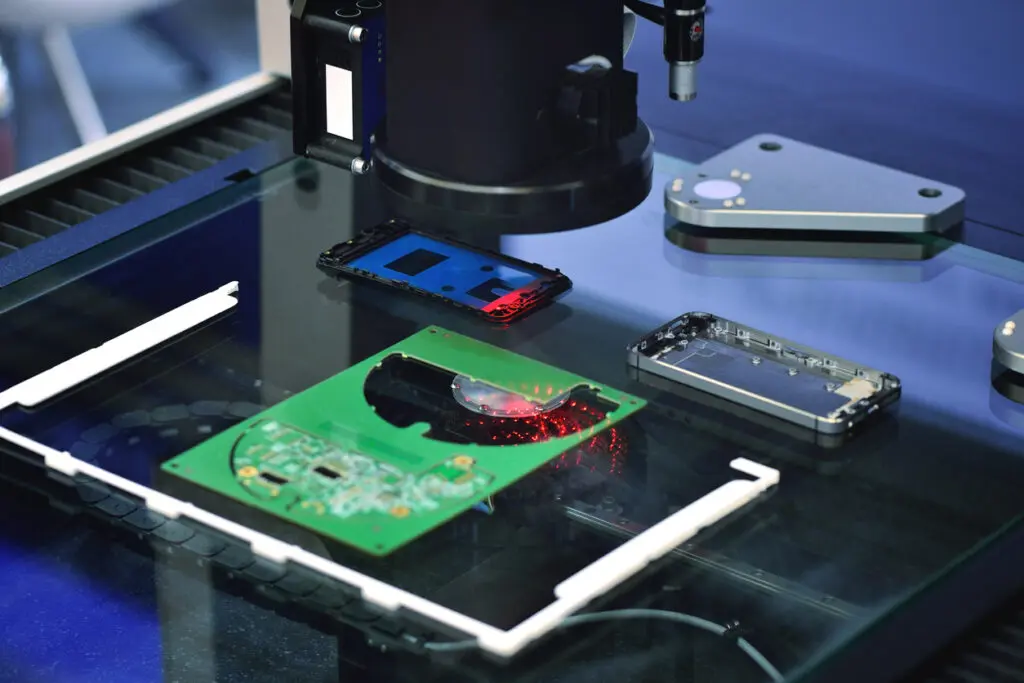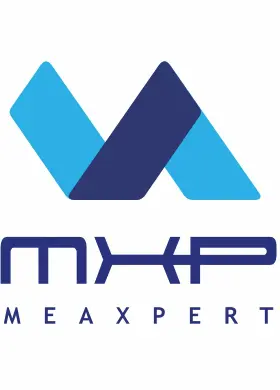
Einführung
Bildverarbeitungssysteme haben die Fertigung und Logistik revolutioniert. Mit Hilfe der Robotik haben sie die Automatisierung industrieller Aufgaben ermöglicht. Bildverarbeitungssysteme können Produktprüfungen, Messungen und Rückverfolgungen durchführen.
Es gibt verschiedene Arten von Bildverarbeitungssystemen, die heute auf dem Markt erhältlich sind. Wir werden jede Art mit ihren Merkmalen und Vorteilen vorstellen. Nach der Lektüre dieses Artikels werden Sie ein klares Bild davon bekommen, was die verschiedenen Bildverarbeitungssysteme zu bieten haben.
Was ist industrielle Bildverarbeitung?
Die Technologie der Analyse von Objekten in der realen Welt durch Bildgebung wird als maschinelles Sehen bezeichnet. Sie wird in der automatischen Inspektion, Fehlererkennung und Fertigung eingesetzt. Die maschinelle Bildverarbeitung ermöglicht die Automatisierung der Industrie, indem sie Echtzeitdaten an Fertigungsgeräte wie Roboter, Förderbänder und Prüfgeräte liefert. Maschinelles Sehen ist die Technik, durch die digitale Technologie mit der realen Welt interagiert. Sie liefert der industriellen Steuerungssoftware geeignete Daten, um die richtigen Entscheidungen zu treffen.
Arten von Bildverarbeitungssystemen
Die Anzahl der von einem Bildverarbeitungssystem analysierten Dimensionen bestimmt seine Kategorie. Im Folgenden werden die Verwendungszwecke und Vorteile der einzelnen Bildverarbeitungssysteme im Detail erörtert.
1D-Bildverarbeitungssystem
Ein eindimensionales Bildverarbeitungssystem analysiert jeweils eine einzelne Zeile. Es verwendet eine Zeilenkamera zur linearen Erfassung von Pixeln. Die eindimensionale industrielle Bildverarbeitung eignet sich hervorragend für die Analyse der Oberfläche von kontinuierlichen Objekten. Es kann Abweichungen und Muster erkennen, um Kantenerkennung und Oberflächeninspektion durchzuführen. Eindimensionale Bildverarbeitungssysteme sind ideal für die Datenerfassung auf sich bewegenden Förderbändern. Da die Objekte in fragmentierten Zeilen gescannt werden, muss die Bewegung des Bandes nicht angehalten werden.
2D-Flächenarray-Scan-System
Ein 2D-Flächenarray-Scansystem erfasst ein 2D-Bild des Objekts mit einer CCD- oder CMOS-Kamera. Ein Array von Pixeln stellt das Bild in einer 2D-Ebene dar. Area-Array-Scan-Systeme liefern hochauflösende Bilder mit präzisen Messungen. Die Kamerasensoren können zwischen 5 und 30 Megapixeln auflösen und verfügen über verschiedene Zoomstufen. 2D-Scanner sind effizient bei der Fehlererkennung, Mustererkennung und Textanalyse. Sie sind ideal für sich langsam bewegende Förderbänder oder das Scannen stationärer Objekte.
2D-Zeilen-Scan-System
Ein 2D-Zeilenscan-System erstellt ein Bild durch Erfassung von Daten in linearen Abschnitten. Das Bild wird mit einer Zeilenkamera aufgenommen, die aus einer einzigen Zeile von Pixeln besteht. Das Bild wird mit Hilfe einer Synchronisierungssoftware aus einer Reihe von linearen Scans aufgebaut. Sie sind ideal für Hochgeschwindigkeitsaufgaben, bei denen Daten von sich bewegenden Objekten erfasst werden müssen. Sie sind auch für Sortieraufgaben und die Druckprüfung geeignet.
3D-Bildverarbeitungssystem
Ein 3D-Bildverarbeitungssystem modelliert ein Objekt in drei Dimensionen, wobei die Parameter Länge, Breite und Höhe effektiv erfasst werden. 3D-Bildverarbeitungssysteme arbeiten mit verschiedenen Techniken, z. B. Stereosystemen, Laser-Wegsensoren, strukturiertem Licht und Time-of-Flight-Imaging.
Stereosysteme bestehen aus zwei Kameras, die ein Objekt aus unterschiedlichen Winkeln aufnehmen. Die Synchronisierungssoftware verwendet diese Bilder, um ein 3D-Modell des Objekts zu erstellen. Ein solcher Prozess erfordert die Lösung einer Aufgabe, die als Korrespondenzproblem bekannt ist.
Laser-Wegsensoren bestehen aus Lasersendern und Kameras. Er wirft eine Laserlinie auf das Objekt, und der reflektierte Strahl wird analysiert, um die dimensionellen Eigenschaften zu modellieren.
Strukturierte Licht-Scanner werfen ein Gitter von Lichtstrahlen auf ein Objekt und analysieren das reflektierte Licht mit einer Kamera. Die Software verarbeitet die Störungen in dem aufgenommenen Bild, um das 3D-Modell des Objekts neu zu erstellen.
Flugzeitsensoren projizieren Infrarotstrahlen auf ein Objekt und bestimmen die Entfernung, indem sie die Zeit messen, die das Licht benötigt, um zurückzukehren. Nach mehreren Iterationen dieses Prozesses wird das 3D-Modell erstellt.
Was ist die Rolle der industriellen Bildverarbeitung?

Defekt-Erkennung
Die maschinelle Bildverarbeitung ermöglicht es Fabriken, Fehler in großen Proben schnell zu erkennen. Diese Art von breit angelegtem Screening trägt dazu bei, Arbeitskräfte für spezielle Fälle ungewöhnlicher Mängel zu sparen. Mit Bildverarbeitungssoftware können Montagelinien automatisierte Entscheidungen treffen, z. B. Pass/Fail-Prüfungen, die viel Zeit und Mühe in der Produktion sparen. Durch die Reduzierung von Fehlern spart die industrielle Bildverarbeitung Zeit, Kosten und Ressourcen.
Erkennung und Zählung von Objekten
Die Objektanalyse durch maschinelles Sehen ist viel schneller als manuelle Methoden. Sie kann die Chargenmenge viel schneller und genauer bestimmen als ein Mensch. Bildverarbeitungssysteme wie Zeilenscanner sind ideal für sich schnell bewegende Montagelinien zur Objekterkennung und -zählung.
Messung und Zählung
Einer der wichtigsten Vorteile der industriellen Bildverarbeitung ist die berührungslose Messung. Bildverarbeitungssysteme nutzen Softwaretools, um die Abmessungen eines Objekts anhand seines Bildes zu analysieren. Sie eignen sich daher für die Konstruktion und Prüfung aller Arten von Werkstücken. Schnelle und effiziente Messungen ermöglichen eine schnellere Produktherstellung und -prüfung, wodurch die Gesamtleistung der Fabrik erhöht wird.
Positionierung und Lenkung
Bildverarbeitungssysteme ermöglichen es Robotern, autonome Entscheidungen auf der Grundlage ihrer Umgebung zu treffen. Roboteroperationen wie Kommissionieren und Platzieren, Sortieren, Prüfen und Navigieren hängen von Bildverarbeitungssystemen ab. Darüber hinaus liefert die Bildverarbeitungssoftware den Robotern Echtzeit-Feedback. Bildverarbeitungssysteme helfen bei der Verbesserung von Fertigungsprozessen, indem sie wenig effiziente Muster, Fehler und Unregelmäßigkeiten erkennen.
Barcode-Lesen
Das Lesen von Strichcodes ist eine der beliebtesten Anwendungen der maschinellen Bildverarbeitung. Zeilensensoren können verschlüsselte Daten von Barcodes lesen und das Informationssystem aktualisieren. Sie helfen Fabriken bei der Erkennung von Objekten, Lagern bei der Katalogisierung ihrer Produkte und Logistikunternehmen bei der Verfolgung ihrer Sendungen.
OCR/Visuelle Erkennung
Mithilfe von Techniken der optischen Zeichenerkennung extrahieren Bildverarbeitungssysteme Text aus einem Bild und verarbeiten ihn in einem maschinenlesbaren Format. Dies ist für die Industrie von großem Nutzen, da die Geräte die auf den Produkten aufgedruckten Informationen erkennen können. OCR hilft beim Abrufen und Speichern von Produktinformationen, bei der Bildsuche, der Roboternavigation und der Bestandsverwaltung.
Das beste Bildverarbeitungssystem für Investitionen in MXP
Bei MXP schaffen wir Bildverarbeitungssysteme um die höchsten Industriestandards zu erfüllen. Mit mehr als 15 Kernpatenten und 20 Exportländern sind wir bestrebt, Qualitätswerkzeuge für Branchenführer zu liefern. Wir haben die Bildverarbeitungssysteme Uranus, Saturn, Pluto und Neptun sorgfältig entwickelt, um die vielfältigen Anforderungen der globalen Fertigung zu erfüllen.
Wir bieten vollautomatische, halbautomatische, CNC-gesteuerte und manuell gesteuerte Maschinen für alle Arten von Betrieben. Unsere Maschinen sind äußerst vielseitig und langlebig, mit Zusatzoptionen für spezielle Anwendungsfälle. Unsere Geräte werden mit der External-Array RationalVue Composite Machine Vision Software geliefert, die alle 2D- und 3D-Messungen verarbeiten kann. Kontakt um eine kostenlose professionelle Beratung zu erhalten!
